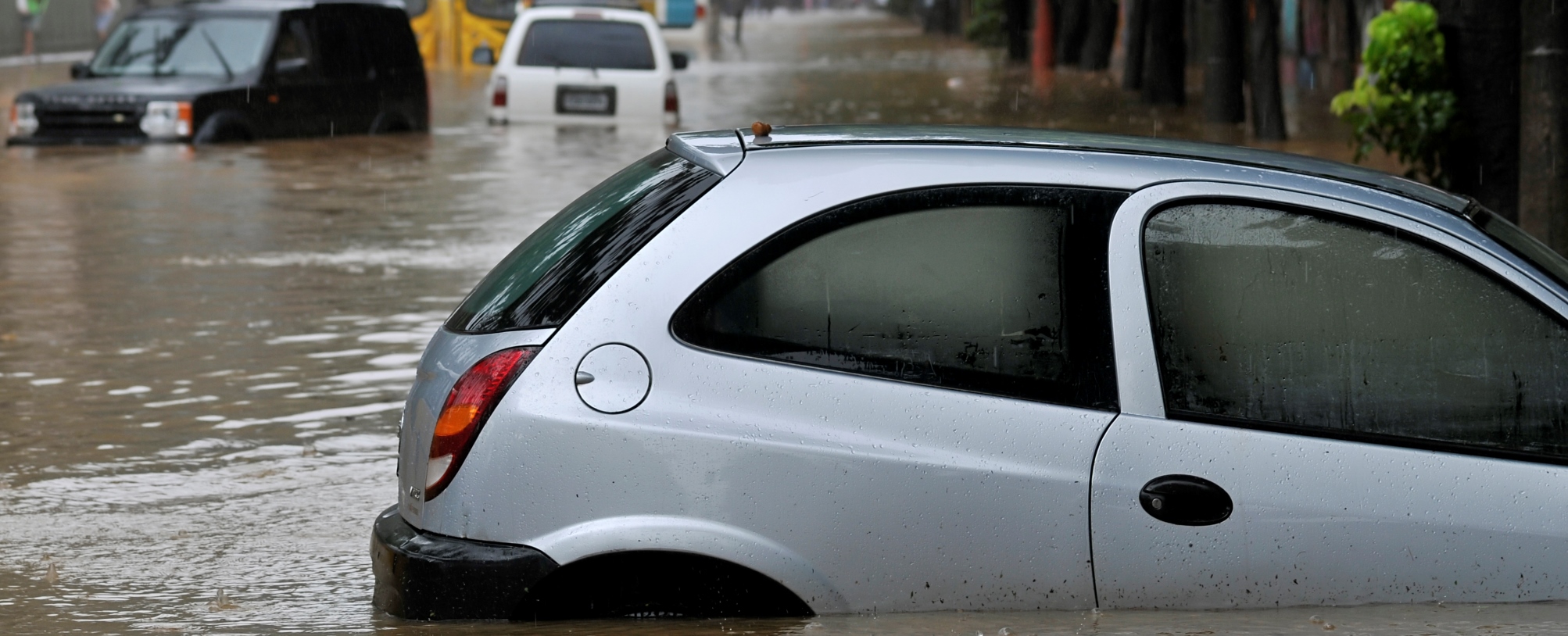
Climate Change: Overview
Green infrastructure strategies can support climate change adaptation, while at the same time providing multiple other social, environmental and economic benefits to communities.
Why it Matters
Green infrastructure helps communities adapt to climate change while increasing livability and cost-efficiency of projects in communities of all sizes.
Climate change impacts present challenges for our communities:
- Flooding and Stormwater: Unpredictable weather caused by climate change means more severe and frequent storms which increase the risk of flooding as traditional grey infrastructure systems (sewers, pumps, etc.) are ill-suited to meet the challenges of increased rainwater and runoff.
- Heat and Pollution in Urban Areas: Urban areas contain dense areas of pavement and concrete buildings, which absorb and retain heat, creating even higher air temperatures that aggravate negative health impacts and increase energy costs required to cool buildings.
- Food Security: The effects of climate change are expected to threaten food production systems stability and food availability and accessibility on a global, national and local level.
Green infrastructure can help communities tackle these challenges by addressing:
-
- Water quantity: Green infrastructure intercepts, absorbs, and holds stormwater, helping to reduce the amount of runoff entering sewers during rain events. By absorbing rain where it falls, living green infrastructure also helps sustain infiltration to aquifers, recharge groundwater reserves and maintain base flow in rivers, thereby relieving stress on local water supplies and reducing the need to import potable water. It also decreases the untreated runoff discharged into water bodies from sewer system overflows.
-
- Water quality: Through its absorption and storage processes, green infrastructure filters pollutants, treating runoff before it enters sewers, reducing pollutants such as toxic contaminants, oil and grease, organic material, and other substances.
-
- Flood protection: Many forms of green infrastructure, including wetlands, intercept and retain rainfall and runoff, lowering the chance of urban flooding and reducing flood flows in urban areas, rivers and streams
-
- Erosion: Green infrastructure reduces soil erosion at source, limits the delivery of sediment to water courses, protects river banks from erosion, and encourages sediment deposition within the floodplain. Woodlots and trees provide this service though canopy cover, which reduces the intensity of the rain when it reaches the ground and acts as a windbreak. Tree root systems also help bind soil together, and the decomposition of tree roots improves soil texture as well as stormwater infiltration, helping to prevent erosion.
-
- High temperatures: Green infrastructure reduces air temperatures through both providing shade and evapotranspiration, combating the urban heat island effect and the associated environmental and health impacts. It also reduces water thermal pollution by cooling stormwater through the filtering process, before it enters naturally cool waterbodies.
-
- Energy use: When less rainwater flows into sewer systems, municipalities reduce their pumping and treatment demand, thereby saving energy. By reducing temperatures and shading building and surrounding surfaces, living green infrastructure also lowers building energy demands for air conditioning cooling in the summer. This also creates comfortable microclimates that encourage walking and cycling, resulting in decreased vehicle use and in turn, greenhouse gas emissions.
-
- Food production: Green infrastructure approaches include protection of agricultural lands and supporting local food production in urban and peri-urban centres. Local food production helps reduce the impact of climate change on Canada’s food supply and reduce emissions from the transportation of food to processing plants and markets. Urban agriculture also has the potential to generate revenue and provide long-term employment.
What GIO is Doing
Green infrastructure is a tool that can help communities increase resilience to the effects of climate change. It is also a valuable investment for governments as green infrastructure can adapt to a variety of conditions that may occur due to the uncertainty of the effects of climate change.
Green infrastructure should be a major element of both the provincial and federal governments’ efforts to increase the resilience and adaptability of Canadian communities facing climate challenges now and in the future. Our current climate change priorities are:
Provincial Bill 172 – Climate Mitigation and Low Carbon Economy Act, 2016
GIO commented on the Province’s proposed Climate Mitigation and Low Carbon Economy Act, 2016 – Bill 172, released February 26th, 2016. In GIO’s letter to Ontario’s Ministry of the Environment and Climate Change, we communicated support for the Province’s leadership in pricing carbon and developing a legislative framework for the Ontario Climate Change Strategy. GIO offered three specific suggestions we hope the Ministry will consider as it finalizes Bill 172:
- Cap and Trade revenue should be earmarked for resilience projects beyond the strict GHG reductions focus.
- The Climate Change Action Plan should take a comprehensive resilience approach that integrates mitigation and adaptation.
- The Province should enable and empower municipalities to act on climate change.
Read the full submission here.
Federal Pan-Canadian Climate Change Framework
GIO provided a submission to the Federal-Provincial-Territorial Working Group on Adaptation and Climate Resilience. The submission advocates for the role of green infrastructure in climate change adaptation and resilience and the importance of incorporating policies, programs and financial efforts that will support community efforts to build green infrastructure. GIO proposes four specific recommendations intended to increase adaptation and resilience to the impacts of climate change:
- Ensure all levels of government allocated a minimum of 15% of green infrastructure funds to living green infrastructure investment for climate change resilience.
- Implement a “consider living green infrastructure first” policy.
- Support green infrastructure asset management.
- Undertake research and capacity building.
Read the full submission here.
Ontario Provincial Climate Change Discussion Paper
GIO provided feedback on the Province of Ontario’s Climate Change Discussion Paper. Click here to see the full submission.
Intact Centre on Climate Adaptation’s Flood Resilient Communities Standards
GIO provided feedback on the Intact Centre on Climate Adaptation’s Flood Resilient Communities Standards. Click here to see the full submission.
